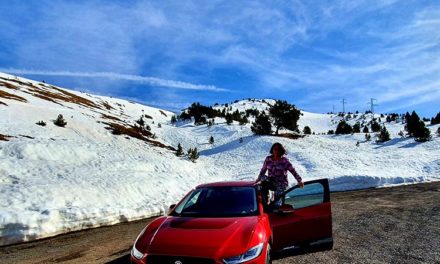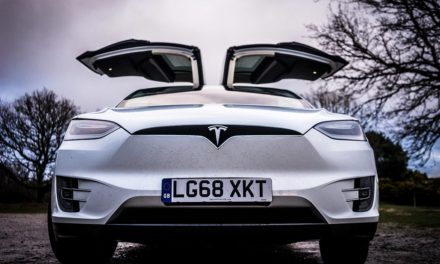Southern Italy gets intensely sunshine-y as summer approaches, to the point where a balder guy like me needs to be careful. This was an open-top test drive to end all, so there would be no hiding the noggin. 30 SPF slathered upon all my exposed parts, I dropped the top for two entire days in southeastern Italy on the seventh-generation Porsche 911 Targa.
Prior to the dawn of the Age of the Porsche 911 convertible in 1980, the Targa models had accounted for forty-plus percent of all 911 sales. Since that fateful cloth-top twist – in the same year as the launch of the first Pac-Man video game (coincidence?) – the Targa take rate has remained more or less around ten percent. After living 36 hours with this 991-gen Targa beauty, I anticipate that percentage rising and soon.
Now a little Targa chatter to liven up the cocktail hour. Between 1956 and 1973, Porsches were victorious in eleven editions of the famously difficult Targa Florio race held on the scrappy roads of Sicily. “Targa” in this context means a placard or trophy, while Florio is the family name of the wealthy Sicilian sportsman who created the race in 1906. The Germans named this 911 version Targa in honour of the Targa Florio successes they were having.
Porsche first came up with the practical design solution of the structural single roll hoop in 1963 for its planned open 911s when the U.S. market started panicking about the rollover dangers of ragtop cars. Not long after the 911 Targa’s start of sale in 1966, Porsche trademarked the name Targa and it is all theirs to this very day in which I find myself in Italy in their newest Targa.

Puglia Drive
The roads in the Puglia region are – by modern standards – exactly as scrappy as what those racers in those cars were facing in Sicily. And, like those racers, I would gladly come here every day of the week to wring out my Porsche, if only to eat the astonishingly fabulous food at every pit stop and feel that 30 SPF sun on my needy skin. I tuned in most to the fancier 3.8-litre €124.094 Targa 4S with its 400 horsepower up at 7,400 rpm and 440 Newton metres of torque. I played for a while in the 3.4-litre €109.338 Targa 4 with 50 fewer horses and 50 less Newtons, but I kept returning to that 4S that gave me so much more while costing only fourteen percent over the 4. I mean, what’s fourteen percent in Porschenomics?
It was sort of a menthol revelation to the hardened of heart when we stood around expecting to be underwhelmed at the unveiling of the new Targa at the last Detroit auto show. Then the veils came off and we were all united in a palpable “Whoa!” After seventeen years of essentially giving up on the importance of the original Targa look and going retractable all-glass, we are back to a proper Targa package. And personally, I think this is easily the best looking Targa ever as well as being easily the best open-top 911 choice period.
The roof retracting and closing mechanism is not an easy piece of engineering at all, and it adds about 40 kgs to the upper half of a 911 convertible. Not an optimal place to be putting on weight in a sports car, but then the Targa body will only ever come in these two basic 911 trims and the Targa client is not so overly concerned with some added weight if it means getting the open Porsche that looks much more special as it rolls down the road.


The Technology
It’s a real showpiece, too, taking nineteen seconds. Whereas on other conventional open cars you can often lift or shut the top while rolling along between 30 to 50 km/h, the topless dance on the Targa necessitates the entire rear roof section with curved glass lifting up and back to make room for the top panel to pass over the Targa hoop and back into its bin before the rear greenhouse member returns to its place. Doing all of this while moving and applying mascara and/or talking on the phone is out of the question, so it only works when the car is parked. Which is good.
The steel roll hoop attaches way down below the front passengers’ hip points just rear of the doors, so it is a sturdy piece of work you can count on should you ever end up driving upside down. And I hope you never do, of course. The silvery pretty part of the hoop that we see is purely cosmetic.
As I said, it was pure sun down south and I had no intention of doing anything with the roof shut. The big test was to see how the Targa roof while open handles wind buffeting and ear thunder at various speeds because past Targas have had their fair share of compromise these ways. On the upper windscreen cross-member, Porsche has incorporated a hand-operated wind deflector that is loveably low-tech and easy. Depending on the speed travelled, I was reaching up and tapping the deflector to deal with the thunder. Between speeds of 60 and 120 km/h, you’ll be exploring the possibilities with this as you choose between the slight thundering in your inner ear or the noise from the frontal wind passing the deflector. Or, you just won’t care a damn and live in peace being less picky than me.
As to the driving, Porsche has all Targas equipped with the all-wheel-drive because this feature has become more of an all-season must-have for the mature lifestyle bunch that wants an all-year open 911. The grey 4S I was testing most was well trimmed and had the €3.510 PDK seven-speed auto and €2.600 sport exhaust system accentuating the €1.595 Sport Chrono package. In the centre console’s Sport Plus setup, this car can get to 100 km/h from a stop in an estimated (always conservatively at Porsche) 4.4 seconds. On these squirrelly rural roads in bankrupt Italy, the Targa 4S was perfectly placed, juking and jiving down narrow and rumpled stone-wall lanes through endless groves of olive trees, while getting me as tanned from the neck up and wrists out as 30 SPF will allow.



The Feel
Thankfully, the Porsche suspension management allows the dampers to be set harder or softer independently from the rest of the drive calibrations just by pushing the damper button by your right thigh. I tried to be hardcore and light up all the red lights on the console but quickly ended up putting the adaptive dampers in their very softest setting for these unfunded roads. This allowed me to go much more quickly all day long on the standard 20-inch Pirelli P Zero tyres. With the added weight out back, too, as on the last Targa, the rear dampers have been modified to maintain a 911-quality ride, but to also allow for slightly more comfort. I appreciated the results and 911 tech boss August Achleitner confessed to me over lunch that he feels the Targa damping strategy is the best of any 911 configuration.
I finished up with a spirited drive leg in a Targa 4S with the seven-speed manual shifter and without the sports exhaust. It was stupendous exactly like this. The 911 crowd worldwide nowadays has around a ten percent take rate on manuals. On Targas, the average is much lower still, around five percent maximum. Getting the manual also drops the weight by 20 kgs. Nonetheless, I do understand why people grab the very solid PDK with shift paddles; it’s easy and performs well while making the car quicker and more fuel-efficient. But not only do I love the manual, but I really enjoyed life sans the sports exhaust cherry on top.

















